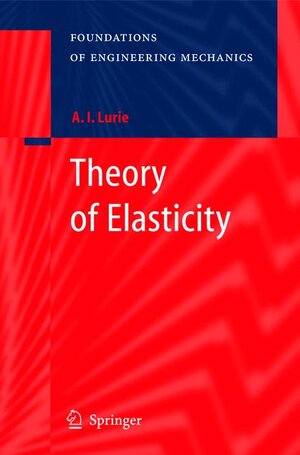
×
![Buchcover ISBN 9783540245568]()
From the reviews:
„Prof. Lurie presented … his famous course “Theory of Elasticity„ which was the basis of the reviewed monograph … . It can be recommended as a textbook for graduated students or PhD students … . In addition, who has no experiences in the tensor calculus based on the absolute notation can get a brief introduction in this topic … . who want to learn the basics of continuum mechanics can use this monograph too.“ (Holm Altenbach, ZAMM, Vol. 85(2), 2005)
The classical theory of elasticity maintains a place of honour in the science ofthe behaviour ofsolids. Its basic definitions are general for all branches of this science, whilst the methods forstating and solving these problems serve as examples of its application. The theories of plasticity, creep, viscoelas ticity, and failure of solids do not adequately encompass the significance of the methods of the theory of elasticity for substantiating approaches for the calculation of stresses in structures and machines. These approaches constitute essential contributions in the sciences of material resistance and structural mechanics. The first two chapters form Part I of this book and are devoted to the basic definitions ofcontinuum mechanics; namely stress tensors (Chapter 1) and strain tensors (Chapter 2). The necessity to distinguish between initial and actual states in the nonlinear theory does not allow one to be content with considering a single strain measure. For this reason, it is expedient to introduce more rigorous tensors to describe the stress-strain state. These are considered in Section 1.3 for which the study of Sections 2.3-2.5 should precede. The mastering of the content of these sections can be postponed until the nonlinear theory is studied in Chapters 8 and 9.



